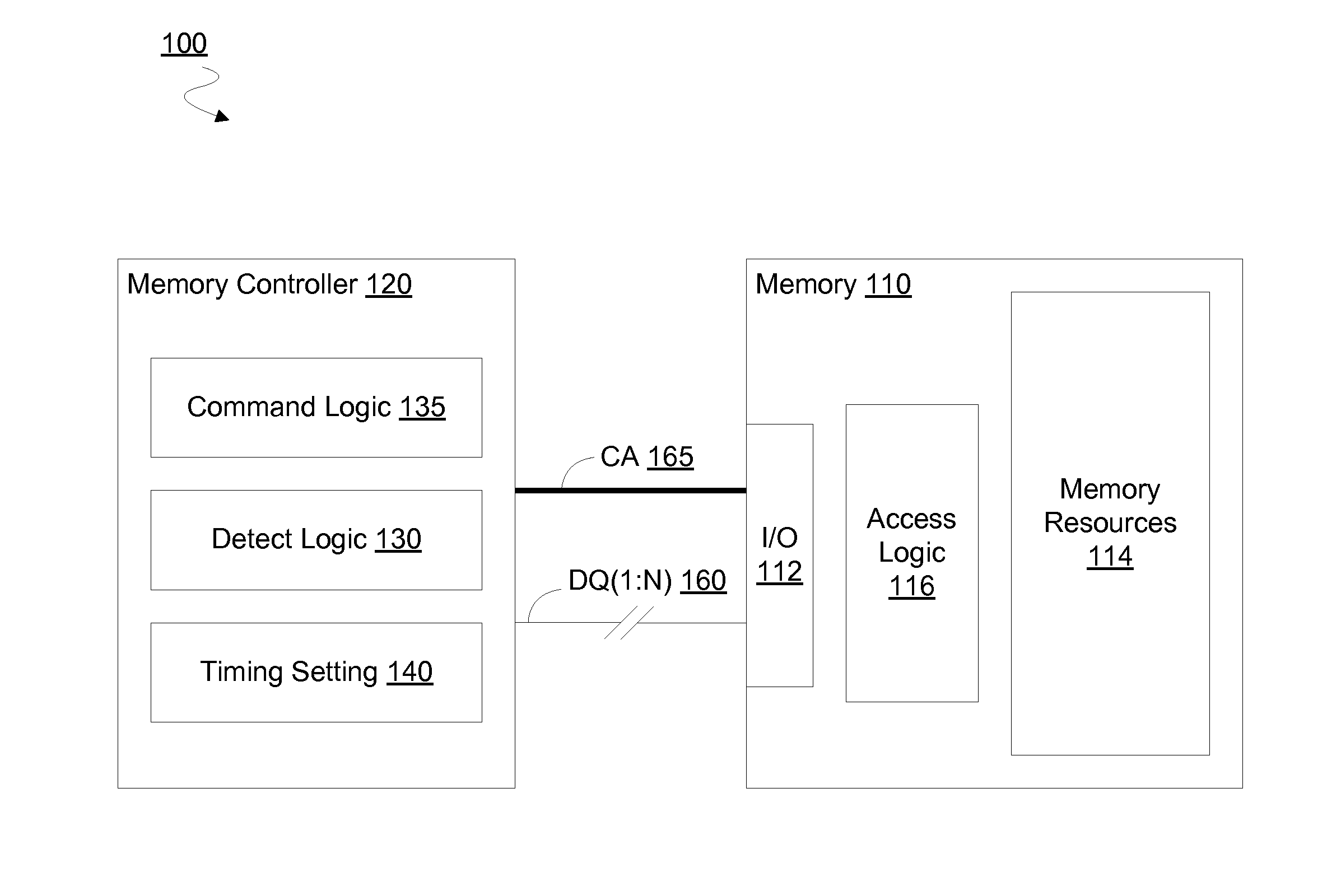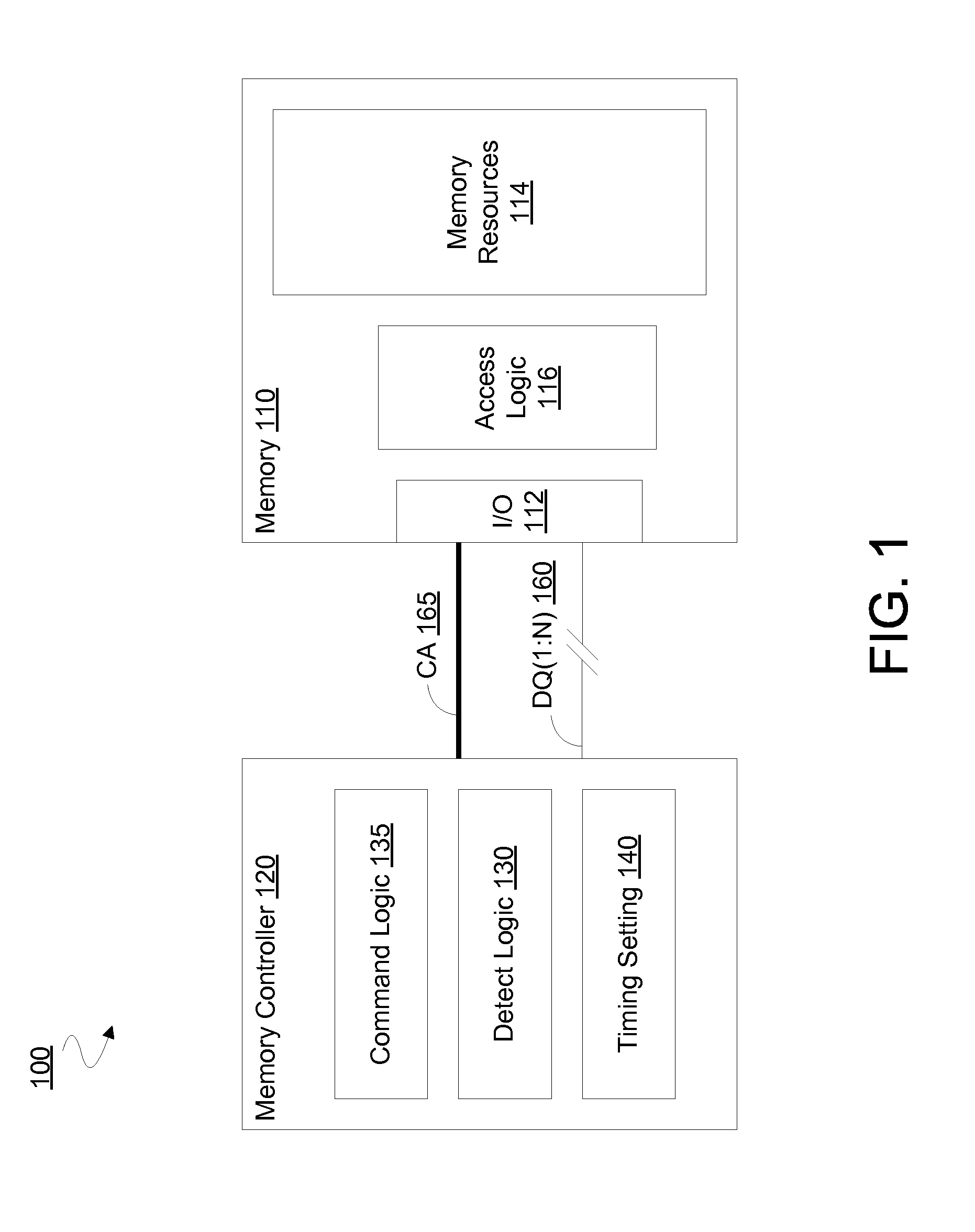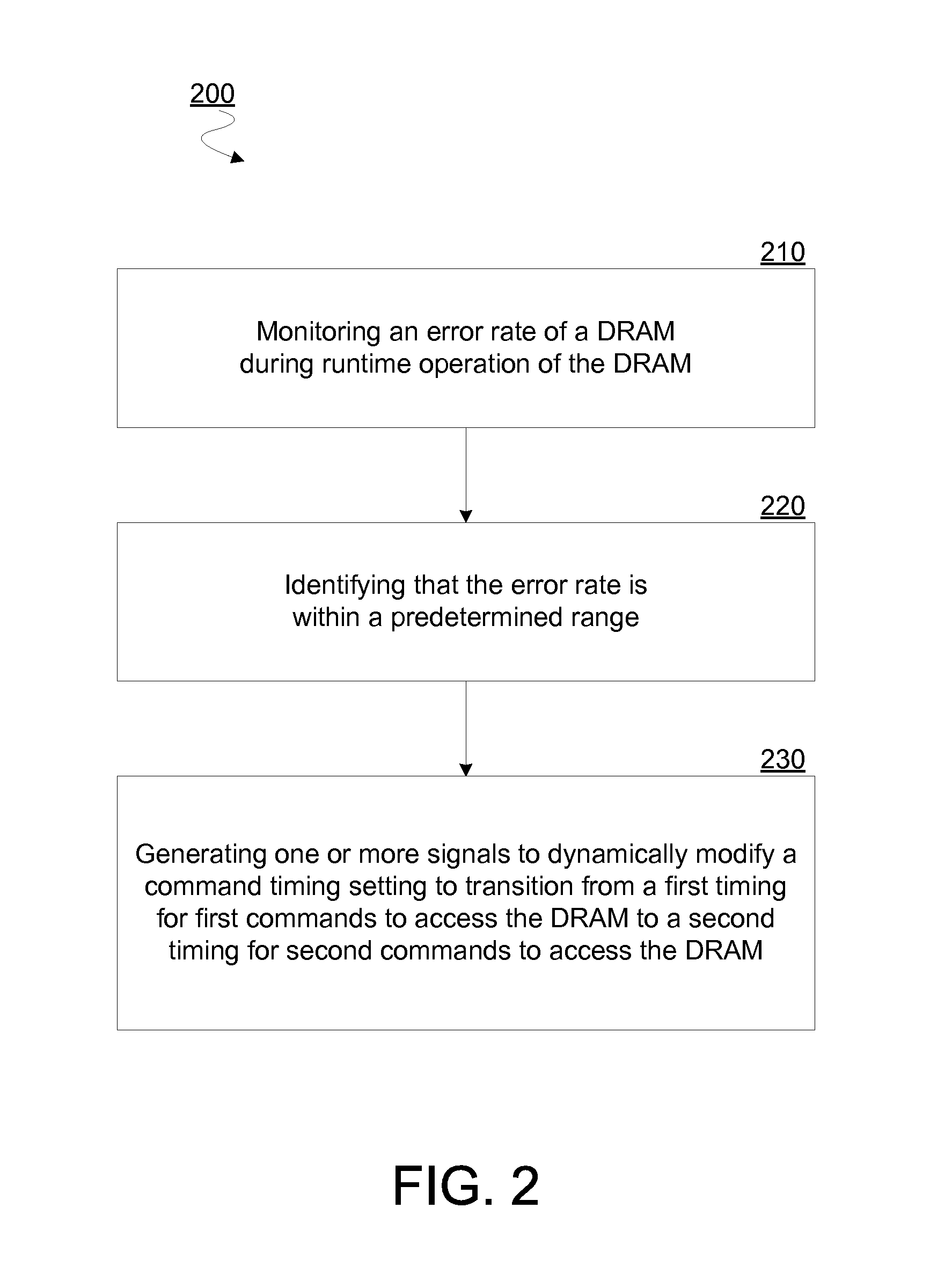Apparatus, method and system to determine memory access command timing based on error detection
- Summary
- Abstract
- Description
- Claims
- Application Information
AI Technical Summary
Benefits of technology
Problems solved by technology
Method used
Image
Examples
Embodiment Construction
[0016]Embodiments discussed herein variously provide for dynamic adjustment of a timing for commands to access a memory such as a DRAM. Such adjustment may be based on a monitoring of a rate of data errors during operation of the memory. For example, certain embodiments determine whether a current error rate is within a predetermined range—e.g. including determining whether the error rate is currently above a minimum threshold rate that is associated with DRAM cell failures, and below a maximum threshold rate that is associated with other failure mechanisms. One or more command timing settings may be adjusted based on such determining. For example, certain embodiments may adjust a timing parameter which specifies or otherwise determines a time delay (e.g. an average time delay, a maximum time delay, a minimum time delay or the like) between successive commands to access memory resources.
[0017]Such a timing parameter may determine a frequency of commands—e.g. at least for a particula...
PUM
 Login to View More
Login to View More Abstract
Description
Claims
Application Information
 Login to View More
Login to View More - R&D
- Intellectual Property
- Life Sciences
- Materials
- Tech Scout
- Unparalleled Data Quality
- Higher Quality Content
- 60% Fewer Hallucinations
Browse by: Latest US Patents, China's latest patents, Technical Efficacy Thesaurus, Application Domain, Technology Topic, Popular Technical Reports.
© 2025 PatSnap. All rights reserved.Legal|Privacy policy|Modern Slavery Act Transparency Statement|Sitemap|About US| Contact US: help@patsnap.com



